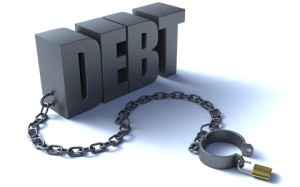- Home - News
- TWI News | TV
- Polls
- Year In Review
- News Archive
- Crime & Punishment
- Politics
- Regional
- Editorial
- Health
- Ghanaians Abroad
- Tabloid
- Africa
- Religion
- Election 2020
- Coronavirus
- News Videos | TV
- Photo Archives
- News Headlines
- Press Release
General News of Saturday, 11 October 2014
Source: starrfmonline.com
71% debt-to-GDP ratio: BoG must explain!
Ghana’s Central Bank and the Ministry of Finance must explain why the Bank of Ghana’s quoted debt-to-GDP ratio is at variance with that quoted by the International Monetary Fund (IMF).
The debt-to-GDP ratio is the ratio between a country's government debt and its gross domestic product (GDP). A low debt-to-GDP ratio indicates an economy that produces and sells goods and services sufficient enough to pay back debts without incurring further debt.
According to the Bretton Woods Institution, the West African country’s debt-to-GDP ratio is 71%, not 55%.
The Fund made the revelation on Wednesday in Washington during a Fiscal Monitor Report briefing.
Deputy Director, Fiscal Affairs Department of the Fund, Sanjeev Gupta, said: “First of all, the debt-to-GDP ratio in Ghana is 71 percent, not 60 percent; so it is much higher than you mentioned”, he clarified, as he responded to a question at the briefing.
“I think you raised the question whether countries should be borrowing abroad or not. I think it is a very good idea to be able to borrow the money and use it effectively for development and building infrastructure. What we have noticed, not necessarily in the case of Ghana, but in many other countries, is that increases in that borrowing has not necessarily been accompanied by higher spending on infrastructure on the capital side, but has been accompanied by increase in spending on the current side. So, that has an impact on the ability to repay this debt,” Gupta said.
Dr Gatsi told private FM station, Citi, Friday that if the IMF’s figure is correct, then it “clearly means it is above the threshold of 60 percent”.
Discussions between a delegation from the world’s second-largest cocoa producing country, are ongoing with the Fund in the US, for a programme to rescue the world’s major gold producer from her economic doldrums.











